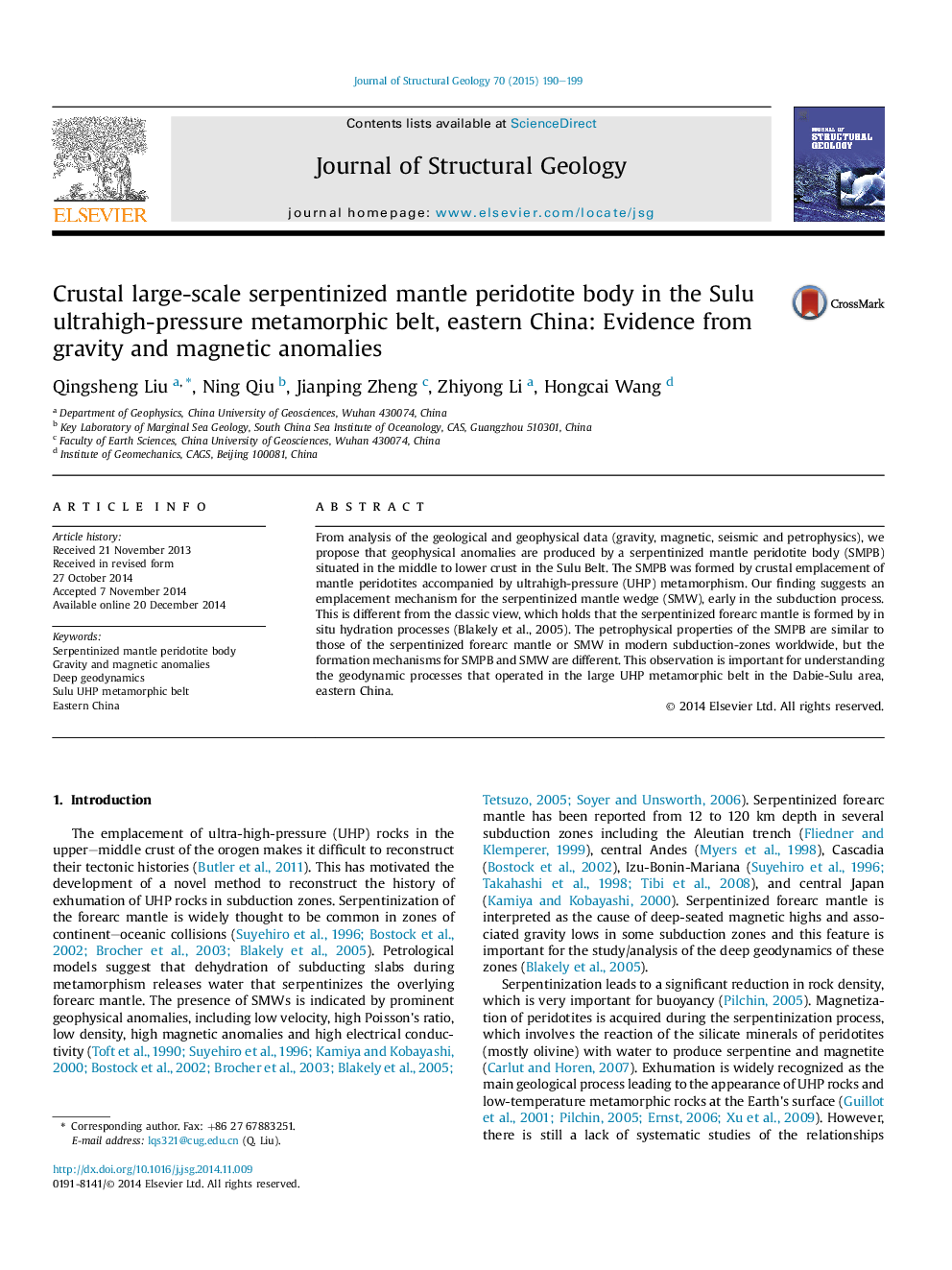| Article ID | Journal | Published Year | Pages | File Type |
|---|---|---|---|---|
| 6444822 | Journal of Structural Geology | 2015 | 10 Pages |
Abstract
From analysis of the geological and geophysical data (gravity, magnetic, seismic and petrophysics), we propose that geophysical anomalies are produced by a serpentinized mantle peridotite body (SMPB) situated in the middle to lower crust in the Sulu Belt. The SMPB was formed by crustal emplacement of mantle peridotites accompanied by ultrahigh-pressure (UHP) metamorphism. Our finding suggests an emplacement mechanism for the serpentinized mantle wedge (SMW), early in the subduction process. This is different from the classic view, which holds that the serpentinized forearc mantle is formed by in situ hydration processes (Blakely et al., 2005). The petrophysical properties of the SMPB are similar to those of the serpentinized forearc mantle or SMW in modern subduction-zones worldwide, but the formation mechanisms for SMPB and SMW are different. This observation is important for understanding the geodynamic processes that operated in the large UHP metamorphic belt in the Dabie-Sulu area, eastern China.
Related Topics
Physical Sciences and Engineering
Earth and Planetary Sciences
Geology
Authors
Qingsheng Liu, Ning Qiu, Jianping Zheng, Zhiyong Li, Hongcai Wang,
